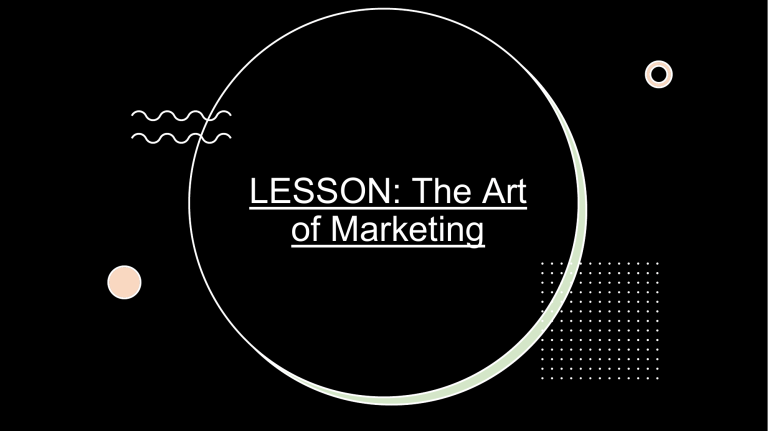
LESSON: The Art of Marketing • • What is Marketing? Marketing involves the development, pricing, promotion, and distribution of ideas, goods, and services to create exchanges that satisfy both buyers’ and sellers’ objectives. • What is Marketing? • What approach should a company take when marketing their products internationally? • There are two main extremes: • • Individualized Market Strategy • • • *** An extensive amount of research data is required in order to ensure that every market is targeted in considerable detail. *** Economic, Political, and Socio-Cultural factors are analyzed so that a revised version of the product can be offered to match the needs of the individual market. *** Promotional efforts take place at the local level, and are generally less costly than global marketing promotions. *** Typically a company will focus on just one or two countries because of the high costs involved with this type of strategy. *** Common with small companies looking to expand their business internationally. SWOT • A SWOT Analysis is a tool for auditing an organization and its environment. It is the first stage of marketing and helps managers to focus on key issues. • SWOT stands for Strengths, Weaknesses, Opportunities, and Threats. • • Strengths and weaknesses are internal factors; strengths should be highlighted and weaknesses eliminated or overcome. • Opportunities and threats are external factors; opportunities should be capitalized on and threats avoided or overcome. • • Global Marketing Strategy • • *** A more universal product is created with only minor modifications for individual markets. *** Research costs are lower, but promotional campaigns must be strong in order to reach individual markets effectively. *** This strategy assumes that, while selling the same product the same way in every market may prompt losses in isolated instances, the benefits derived from the overall effect will outweigh these losses. *** Only recommended for large multinational corporations that can afford to take a hit on a poorly marketed product on occasion. • • The Marketing Mix (the Four Ps) consists of a series of strategic decisions made in four main areas - Product, Price, Place and Promotion - for the purpose of satisfying customers in a target market. • Often what works well in the domestic market is impossible in a foreign market. The Marketing Mix The Marketing Mix • Product • This is the starting point. It is the good or service that is marketed to the target customer group. Product decisions involve the identification of the ideal product, its quality and features, along with any modifications, varieties offered, and packaging. It is important to note that a product isn’t necessarily a physical good; it can also be a service, an idea, a destination, or even a cause. • Price • The Marketing Mix When setting its prices, a business needs to think about its costs, but they also need to think about the effect that price will have on demand. Setting prices in international markets can be particularly tricky; companies must consider economic conditions, currency exchange rates, and the international business climate. Businesses can reduce costs by improving manufacturing and efficiency. The Marketing Mix • Place • This element refers to the way that products are distributed. It involves getting the product into the hands of the consumer when they want it and where they want it. International distribution is complex, and often intermediaries are required to help with the distribution. The Internet is an increasingly important tool, especially for small businesses, that can use it to reach their customers on a global scale. The Marketing Mix • Promotion • This element can include advertising, personal selling, sales promotion, publicity, and public relations. It is the total set of tools available for communicating with the target market. Branding is an important component of promotion and a successful brand is the most valuable resource a company has. Companies with strong brands try to use these brands globally to give the company a uniform worldwide image. This makes it easier to introduce new products associated with the brand name.


